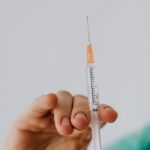INDIAN RIVER COUNTY — Gail Lee knows how scary rabies can be. She had a harrowing experience recently as a raccoon chased her dogs in a park, and swatted at a friend’s — then aggressively pursued dogs and owners to their cars.
Rabies is always a problem in more rural areas, but the last few weeks have seen increased activity, with the health department issuing alerts for both the mainland and the central barrier island.
Animal control is putting out more traps hoping to catch sick animals.
“I was lucky,” Lee says of her recent encounter.
Rabies is a virus that attacks the rain and is virtually always fatal once symptoms begin. It kills the animals unfortunate enough to contract it in just a week to 10 days. In humans, left untreated, it is fatal as well.
Human cases are also complicated because symptoms may not appear for up to two years after contact with the virus. By the time they do appear, it is effectively untreatable. But just coming near a rabid animal is frightening enough, said Lee.
While sitting with her two dogs, Maddie and Beau, beside a pond near 58th Avenue, a completely healthy looking raccoon came running across a large pasture to chase her dogs.
Her pets, both gentle and trained as therapy dogs, scattered, but a large lab mix belonging to a friend ran the raccoon up a tree. A few moments later the raccoon raced back down and took off after not just the dogs, but Lee and her friend as well.
“I couldn’t believe it, Lee said. “He looked like normal ‘coons we see all the time, but I’ve never seen one behave like this. He scared us, and when he swatted at Beau, he caught his collar and pulled it off.”
The group headed to their cars, but in no time the furious animal was beside the vehicles.
“He ran down inside a ditch for a minute, then came racing back where I was standing beside my truck. I got inside but he was right there, determined to get at us. I’ve never seen anything like it in my life.”
She told her co-workers about the baffling experience the next day, and learned there was a rabies alert right where her encounter occurred. Beau, the Australian shepherd the raccoon swatted, had been vaccinated and his thick fur prevented skin contact with the animal’s claws.
Eighteen other people in our county this year were not so lucky. Their contact with raccoons or other animals have included scratches or bites. Victims are taking the suggested treatment known as post exposure prophylaxis, a regime of shots.
Dr. Eric Carter, Indian River Medical Center emergency department medical director, recommends get ting to an emergency clinic as soon possible after contact with a suspicious animal. Thoroughly wash the affected area with generous soap and water as quickly as possible be fore coming. If eyes, nose, mouth or other mucous membranes are involved, they should be washed thoroughly also as soon as possible after coming into contact with the animal.
“You’ll need a tetanus shot if you haven’t had one in 10 years, and an antibiotic,” Dr. Carter said. “The claws or mouths of these animals can be full of bacteria. You will also be getting one shot of the rabies vaccine and one of immunoglobulin (human rabies immunoglobulin or HRIG).”
Those infected have to go to the Health Department after that, since it is responsible for tracking the cases and following up with any animals involved if possible.
The day a patient is in the emergency clinic to get the first shot is considered day zero. Vaccine needs to be administered on days 3, 7, 14, and but those last shots are administered at the Health Department.
Carter also said that sometimes a patient has had a rabies vaccine in the past, but the effects only last a few years.
“If it’s been more than three years since you had the vaccine, you’ll need a booster shot but your shot regime will be shorter, the first and second ones only,” he explained.
In the last several weeks the county Health Department confirmed rabies in two animals that were captured, in one case a raccoon and the other a feral cat.
Other raccoons, cats, bats, and an otter could not be captured, but their behavior suggested rabies was a strong possibility and treatment was begun.
Health Department Environmental Manager Cheryl Dunn said the situation with raccoons is particularly dangerous because they can easily spread it to their young.
“The virus expresses itself in active cases when animals are under stress and become symptomatic,” Dunn added. “We’ve had a longer and colder winter than average and the population of raccoons in Sebastian has been found to have a serious roundworm problem. These sorts of stresses can cause active cases of the virus.”
She said that raccoons love cat food and birdfeeders. Pet owners should not feed cats outside or leave any pet food where raccoons can find it. Secure all garbage and take down the feeder for a while, she suggests. And vaccinate pets.
Symptoms in wild animals begin as agitation and unusual behavior according to Jason Ogilvie, Manager of Indian River County Animal Control.
“The animals are irritated and skittish, but they get aggressive,” he said. “They may attack you unexpectedly or start chasing things. A little later they may act drunken or go round in circles. They may be falling down, staggering, or just laying there in the open or starring with a blank look. It all depends on what stage they’re in.”
He also said raccoons have a naturally “wobbling” gait that is normal and it is not unusual for them to be seen during the day.
The best policy is to report any contact with an animal that is aggressive or seems sick, and any bite or scratch should by seen by a doctor.
Cheryl Dunn’s best advice is avoidance.
“The best thing right now is to stay away from wild animals, especially raccoons,” she said.






